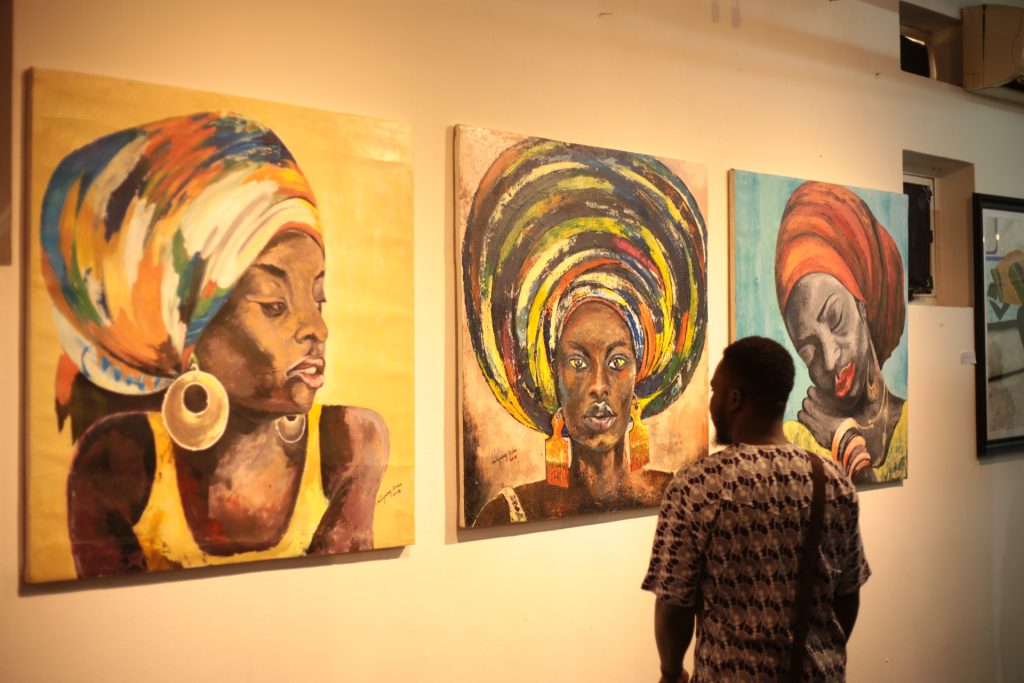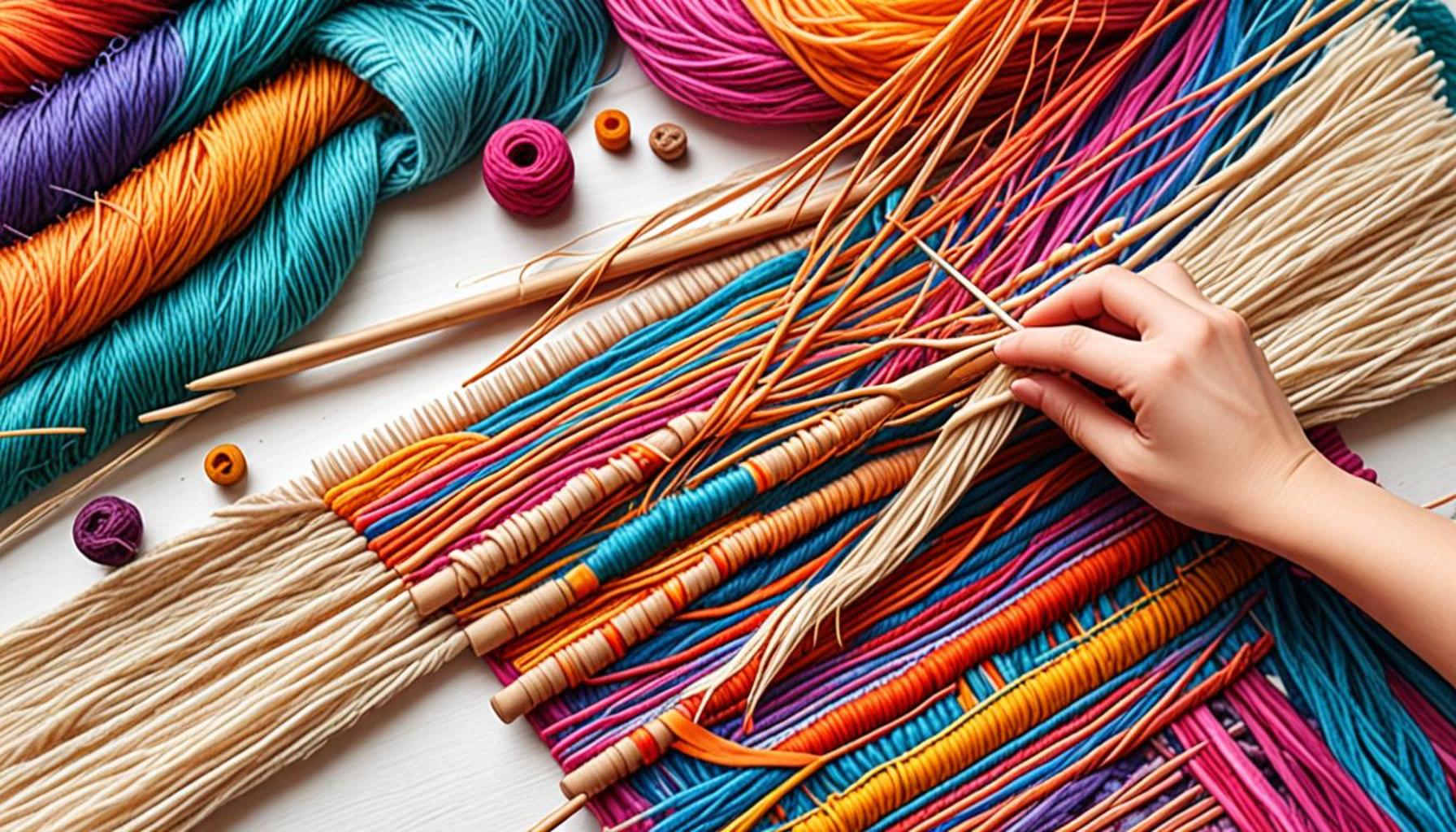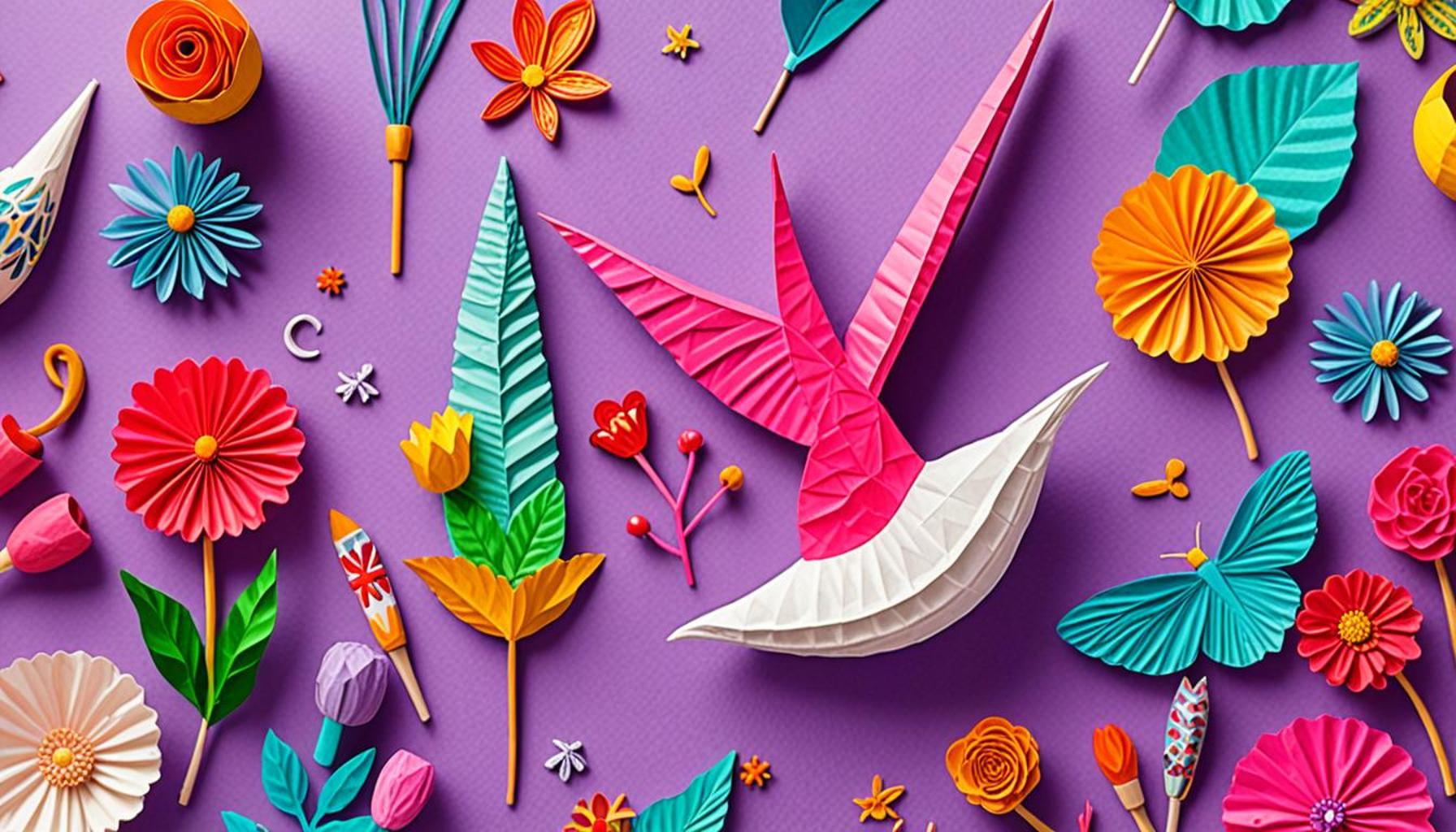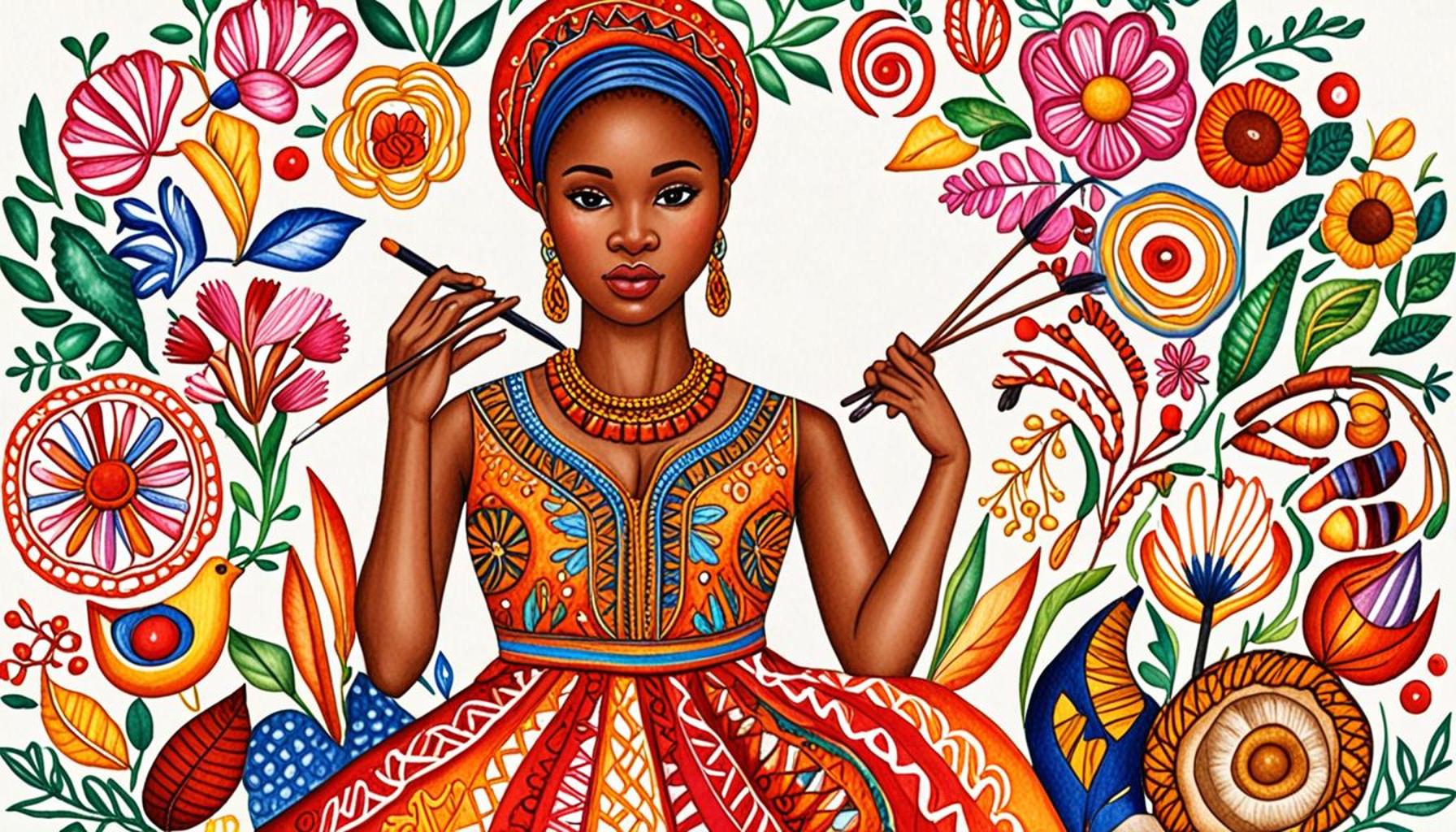Exploring Techniques of Nigerian Traditional Craftsmanship: Culture and Creativity in Each Piece

Unveiling Nigeria’s Rich Craft Heritage
Nigeria boasts a vibrant tapestry of traditional craftsmanship that reflects its rich history and diverse cultures. Each handmade piece is a testament to the creativity and skill of artisans, who draw inspiration from their surroundings and cultural heritage. Exploring Nigerian traditional craftsmanship opens up a world of art, history, and identity.
Diverse Techniques and Styles
The techniques employed in creating traditional crafts in Nigeria vary widely across regions, influenced by local resources, cultures, and traditions. Key methods include:
- Weaving: This is particularly evident in the colorful Aso Oke fabric of the Yoruba people, known for its intricate patterns and vibrant colors, often used in ceremonial attire. Similarly, the southeastern tribes produce the Ugba cloth, characterized by its unique density and textures, which are integral to their cultural identity.
- Carving: Artisan wood and ivory carvers are known for producing stunning masks and sculptures that not only serve as art pieces but also embody spiritual narratives and historical significance, integral to cultural ceremonies. The renowned Ekiti and Ijaw carvers, for instance, are celebrated for their detailed craftsmanship that captures folklore and myth.
- Pottery: The Nok culture’s terracotta statues—notable for their expressive features—showcase ancient pottery techniques that are still revered today. Beyond aesthetics, these pieces are archaeological marvels, offering insights into societal structures and customs of one of Africa’s oldest civilizations.
Each piece of craftsmanship tells a story, reflecting the social, spiritual, and personal narratives of its makers. Moreover, traditional artisans contribute significantly to local economies while preserving cultural heritage for future generations. In cities like Kano, vibrant markets feature a plethora of craft goods, showcasing the entrepreneurial spirit of artisans.
Impact on Modern Art and Culture
The influence of traditional craftsmanship extends beyond mere aesthetics. It plays a crucial role in:
- Revitalizing cultural identity: As globalization increases, artisans strive to keep their traditions alive through education and community workshops that attract younger generations, ensuring that valuable skills are passed down.
- Innovating contemporary designs: Many artisans blend traditional and modern techniques to cater to contemporary tastes. For example, modern jewelry makers incorporate traditional patterns into contemporary items, appealing to a broader audience both locally and globally.
- Attracting tourism: Craft fairs and cultural festivals, such as the annual Aso Oke Festival, celebrate these rich traditions, drawing visitors from around the world. This not only fosters appreciation for Nigeria’s cultural heritage but also boosts the local economy through tourism.
As we delve into the intricacies of Nigerian traditional craftsmanship, prepare to uncover the profound connection between culture and creativity embedded in each meticulously crafted piece. Each art form serves as a bridge between the past and present, inviting both locals and visitors to engage with Nigeria’s rich heritage.

LEARN MORE: This related article may interest you
Artistry in Craft: Techniques Shaping Nigeria’s Cultural Landscape
Nigerian traditional craftsmanship is a vibrant reflection of the nation’s diverse cultures, woven together through the masterful techniques employed by artisans. Each handcrafted item is imbued with meaning, symbolizing not only the artistic abilities of its maker but also the cultural significance it holds within the community. From the intricacy of weaving to the elegance of carving, the techniques utilized in producing these pieces highlight the rich narrative of Nigeria’s heritage.
Weaving: Threads of Tradition
Weaving is a cornerstone of Nigerian craftsmanship, with various regions showcasing their unique styles and materials. The Aso Oke fabric, for instance, is a Yoruba masterpiece characterized by its stunning colors and elaborate patterns, often worn during significant life events such as weddings and naming ceremonies. This artisanal craft not only speaks volumes about the wearer’s social status but also serves as a bonding thread between generations, as elders pass down their skills to younger artisans.
In contrast, the southeastern tribes, particularly the Igbo, have perfected the art of producing the Ugba cloth. Known for its unique texture and density, Ugba cloth is integral to the Igbo traditional attire and is often intricately adorned with embellishments that tell stories of ancestry and heritage. Through such crafts, we uncover a dynamic interaction between fashion and cultural identity, where traditional skills are infused into everyday life.
Carving: Shaping Spiritual Narratives
The art of carving in Nigeria embodies both religious and historical implications, making it a vital aspect of traditional craftsmanship. Master artisans from the Ekiti and Ijaw regions are renowned for their exquisite wooden and ivory sculptures, often depicting deities, ancestors, and folkloric characters associated with spiritual beliefs and community festivals. These intricately carved masks possess an aura of sacredness, serving not only as decorative pieces but also as instruments of cultural storytelling during rituals and ceremonies.
The Benin Bronzes, a collection of brass plaques and sculptures from the ancient Kingdom of Benin, further exemplify the significance of carving in Nigeria. These artifacts, often embellished with historical figures and events, provide invaluable insights into the society, highlighting social hierarchies, politics, and craftsmanship. Artists producing such works are not merely creators; they are custodians of history, intertwining the past with modern expression.
Pottery: A Legacy of Form and Function
Pottery is another critical domain of Nigerian traditional craftsmanship, with techniques rooted in ancient practices. The Nok culture’s terracotta sculptures, some dating back over two thousand years, showcase a remarkable mastery of form, embodying expressive human and animal figures. These artifacts offer a glimpse into the artistic prowess of the Nok people and their societal values, playing a crucial role in understanding Nigeria’s historical lineage.
In various communities, pottery serves not just as aesthetic objects; it fulfills functional needs within daily life. From cooking pots to ceremonial vessels, the shapes and designs of these pieces vary, reflecting the cultural significance and everyday practices of different groups. Through these works, we see how pottery is interwoven with both the practical and the spiritual, cementing its importance in the collective memory of Nigerian culture.
Through the exploration of these traditional techniques, the artistry of Nigerian craftsmanship reveals profound stories, waiting to be uncovered. There is a continuing thread that connects the past to the present, highlighting the resilience and creativity of Nigerian artisans who strive to keep their cultural heritage alive amidst a rapidly changing world.
Exploring Techniques of Nigerian Traditional Craftsmanship: Culture and Creativity in Each Piece
Nigerian traditional craftsmanship is a rich tapestry woven from countless cultural threads that reflect the diverse customs and practices of the nation’s ethnic groups. Each crafted piece tells its own story, showcasing the creativity of artisans who have honed their skills over generations. Unique techniques and materials used in these crafts not only embrace creativity but also preserve cultural heritage, making them an essential part of Nigeria’s identity.
Among the most famed craftsmanship techniques found across Nigeria are the art of weaving, pottery, and wood carving. Weaving, notably practiced by various tribes, employs intricate patterns and vibrant colors, each symbolizing different aspects of life and culture. Pottery, a practice that has existed for thousands of years, is often used for both functional and decorative purposes. Artisans combine traditional methods with modern designs to produce pieces that resonate with contemporary aesthetics while keeping their cultural significance intact. Wood carving, another celebrated technique, sees skilled artisans transform local woods into stunning sculptures and utilitarian objects loaded with spiritual meaning.
The use of locally sourced materials is key to these techniques. For instance, the vibrant dyes used in textiles come from indigenous plants, reflecting a sustainable approach to craft. Additionally, artisans often incorporate symbols and motifs that bear historical significance, infusing each piece with a deeper connection to the past. As these craftsmen continue to innovate, they wrap modern influences into their works, bridging the gap between tradition and contemporary needs, providing an exciting narrative for viewers.
| Category | Description |
|---|---|
| Artisan Techniques | Methods like weaving, pottery, and wood carving reveal a vibrant cultural heritage. |
| Cultural Significance | Each crafted piece embodies stories, symbols, and the spirit of its ethnic group. |
Exploring Nigerian traditional craftsmanship adds profound depth to our understanding of the innovations and cultural practices that define this vibrant society. Every piece is a testament to the skill, dedication, and creativity that artisans bring, inviting us to delve deeper into their extraordinary world.
CHECK OUT: Click here to explore more
Adornment and Function: The Essence of Nigerian Beadwork
Beadwork is another venerable yet vibrant aspect of Nigerian traditional craftsmanship that beautifully encapsulates both art and function. In various ethnic groups, beads are used not only to create jewelry but also to tell stories and symbolize status. For instance, the Efik and Bini people are particularly renowned for their elaborate beadwork, often incorporating intricate patterns and vibrant colors that have cultural significance. These beaded items are adorned on ceremonial occasions, where their colors may represent various attributes—such as peace, power, and ancestry.
The practice of wearing beads in Nigeria transcends mere aesthetics. For example, the Igbo community has a rich history of producing ceremonial bead collars and necklaces used during important ceremonies, such as weddings and title-taking events. The beads, crafted from materials like glass, clay, and seeds, often feature unique designs that convey messages about lineage and community affiliation, thus tying the craft closely to identity and heritage.
The Art of Metalwork: Forging Identity and Tradition
Nigeria’s traditional craftsmanship also includes the stunning art of metalwork, which serves both utilitarian and artistic purposes. Blacksmithing, particularly prevalent among the Yoruba and Nupe peoples, is a revered craft that produces tools, weapons, and decorative items. The meticulous techniques employed in forging iron and other metals echo centuries-old skills passed down through generations, embodying a legacy of strength and resilience.
Typical items crafted through metalwork include beautifully engraved ceremonial swords and ornate calabashes forged into various shapes, often embellished with patterns symbolizing cultural meanings. These pieces not only serve functional roles but also contribute significantly to the cultural landscape by reflecting the values and stories of the communities involved in their creation.
Basket Weaving: Crafting Nature’s Design
The art of basket weaving, particularly among the Fulani and Kanuri tribes, utilizes natural fibers, grasses, and reeds to create intricately woven pieces that marry form and function. This technique showcases the artisans’ deep understanding of materials and the environment around them. Baskets crafted for terrestrial use, fishing, and storage often display vibrant colors and intricate patterns that tell a story unique to each community.
The process of harvesting and transforming these natural materials into stunning functional items highlights sustainability, as artisans work diligently to respect the natural resources while giving life to their cultural narratives. Baskets are not only used for practical purposes but also serve as decorative items during cultural events, signifying the dexterity and creativity of the artisans.
Symbolism in Textiles: Stitching Together Narratives
Textile crafts extend beyond weaving to encompass embroidery and dyeing techniques that further illustrate Nigeria’s diverse cultural fabric. The craft of Adire, originating from the Yoruba culture, involves batik and tie-dye techniques. The creation of these textiles involves a labor-intensive process often using indigo dye, with handmade designs that carry historical and spiritual meanings.
Each pattern is emblematic of the wearer’s identity, and the flexibility in design allows artisans to innovate while preserving traditional methods. The Adire fabrics are often influential in contemporary fashion, symbolizing how traditional craftsmanship continues to evolve and inform modern aesthetics, bridging the gap between the past and the future.
As we probe deeper into the techniques that define Nigerian traditional craftsmanship, we reveal a narrative rich with complexity, cultural depth, and artistic innovation. Each piece not only represents the skills of its artisan but also serves as a testament to the enduring spirit of Nigerian culture, waiting to be explored and appreciated by future generations.
SEE ALSO: Click here to read another article
Conclusion: Celebrating the Rich Tapestry of Nigerian Craftsmanship
Nigerian traditional craftsmanship is a vibrant showcase of
culture, creativity, and intricate techniques that have withstood the test of time. From the captivating art of beadwork, which carries stories of lineage and identity, to the resilient craft of metalwork, where strength and beauty merge, each piece resonates with the cultural narratives of its community. The meticulous basket weaving traditions reveal a deep connection to nature, utilizing local materials while showcasing the artisans’ skill and creativity. Similarly, the stunning textiles created through Adire highlight the dynamic interplay between heritage and contemporary expression, reflecting our collective history as well as our aspirations for the future.
As we delve into these remarkable techniques, we uncover a tapestry rich in symbolism and artistic ingenuity that reflects Nigeria’s diverse cultures. Each handcrafted item is not merely a product; it serves as a conduit for cultural storytelling, connecting generations and fostering appreciation for the talents of artisans. As the world increasingly embraces handmade artistry, recognizing the significance of cultural craftsmanship becomes essential. This not only preserves age-old traditions but also encourages the new wave of creatives to draw inspiration from their roots.
By continuing to explore and celebrate the techniques of Nigerian traditional craftsmanship, we honor the histories, identities, and communities they represent. As readers, we are invited to appreciate and support these artisans, ensuring their crafts endure and flourish. In doing so, we maintain a vibrant cultural legacy that enriches us all.


